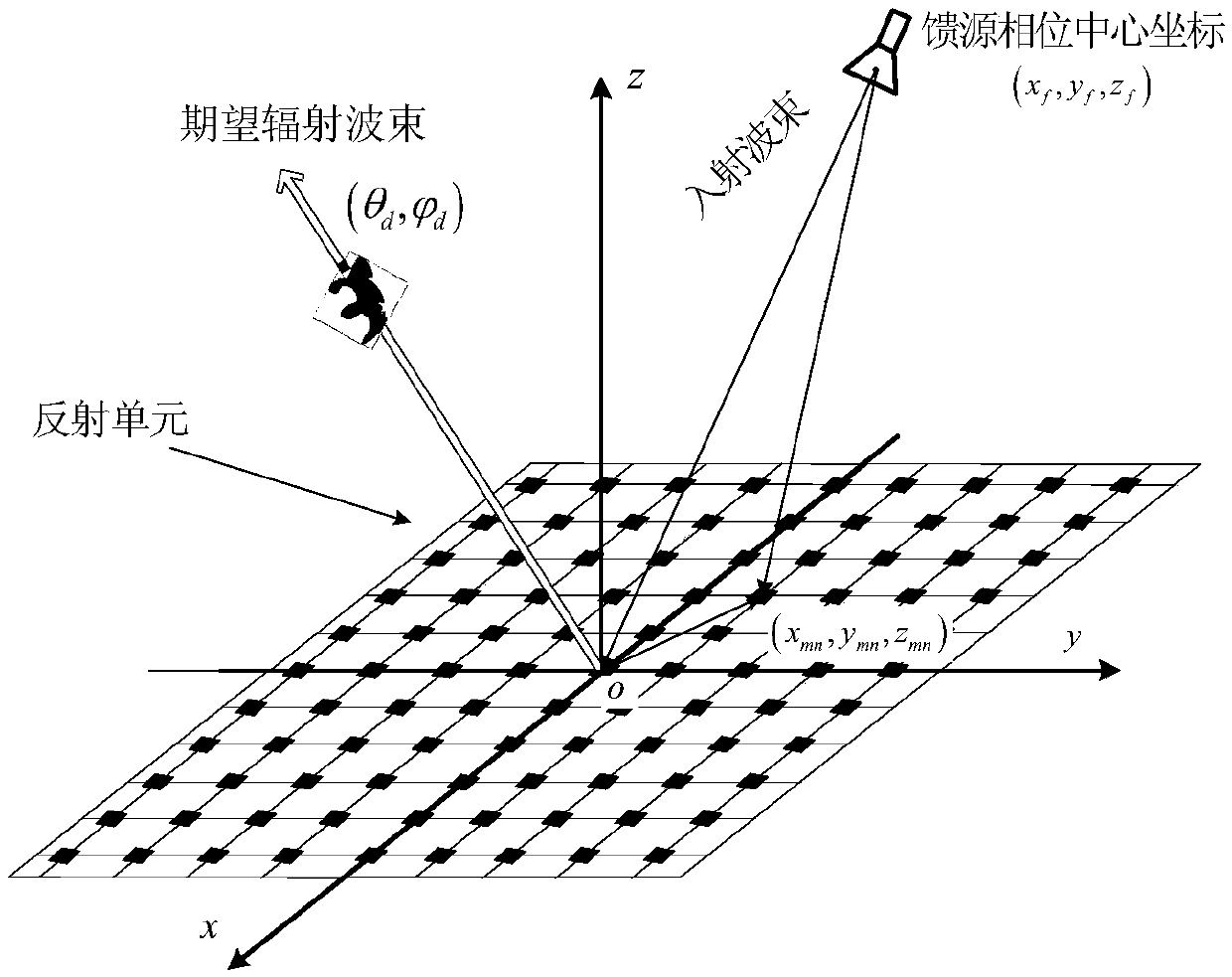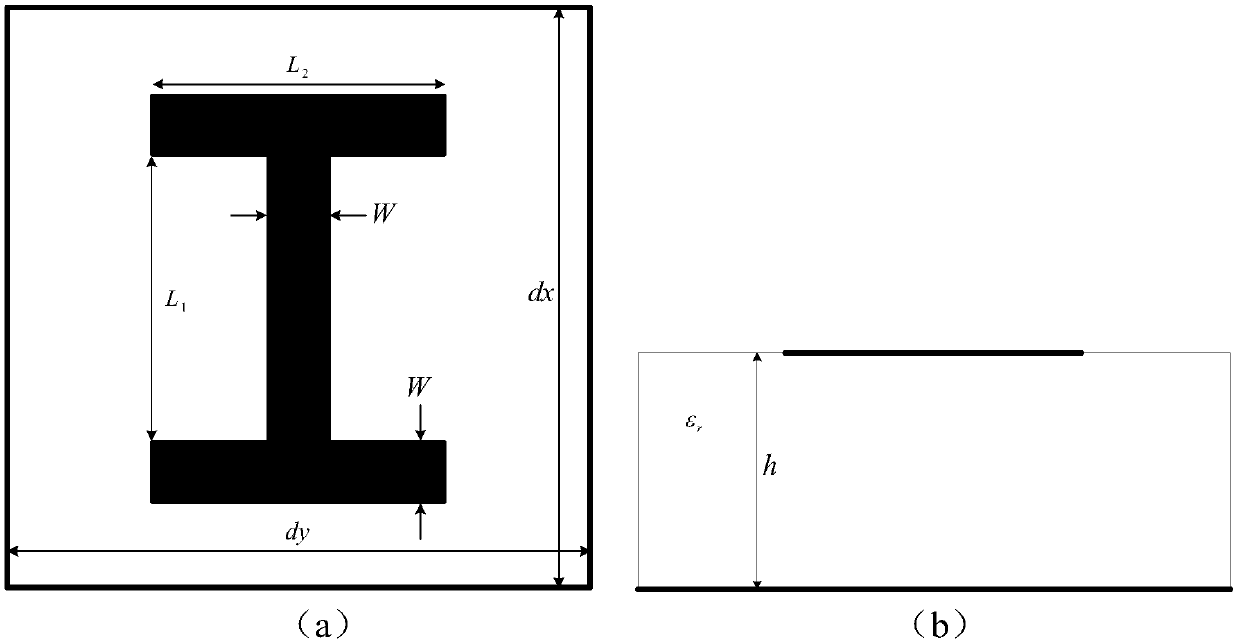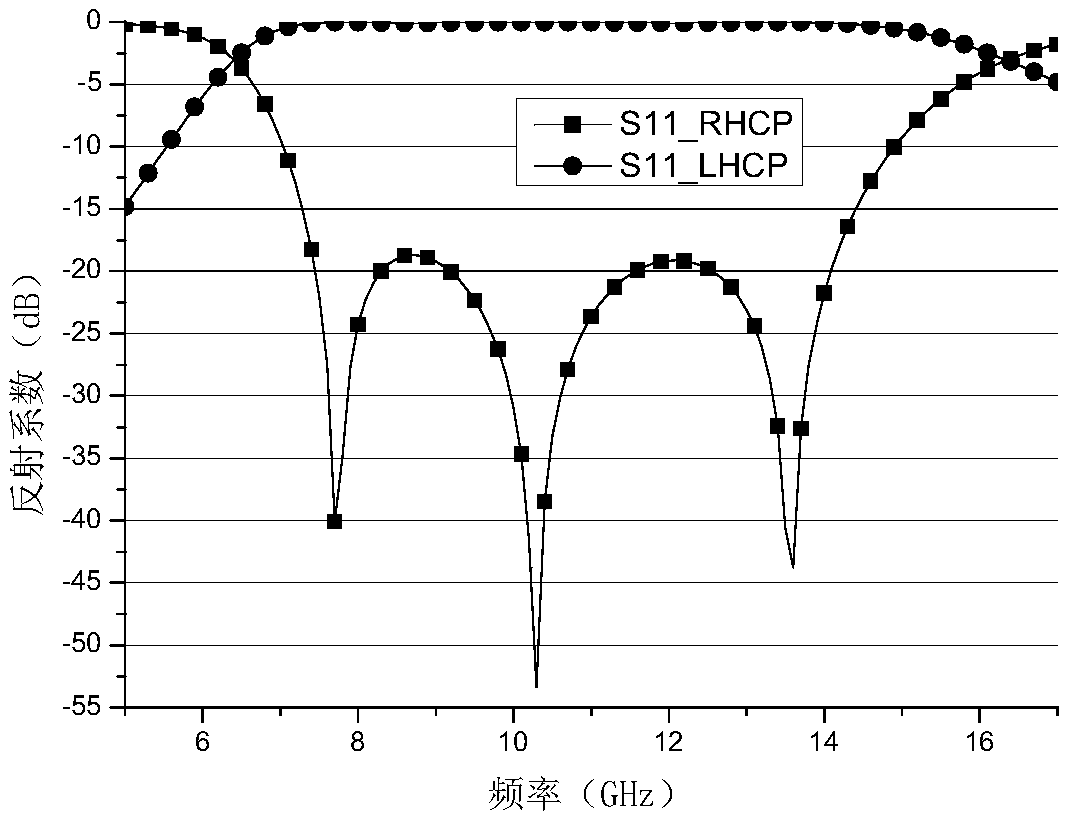Method for generating circularly polarized vortex electromagnetic waves
A vortex electromagnetic wave and generation method technology, which is applied to electrical components, electrical digital data processing, radio transmission systems, etc., can solve the problems of low conversion efficiency, difficult processing, complex structure, etc., and achieve low cost, convenient application, and control high precision effect
- Summary
- Abstract
- Description
- Claims
- Application Information
AI Technical Summary
Problems solved by technology
Method used
Image
Examples
Embodiment 1
[0085] Embodiment 1: Feed forward feed, it is expected to generate a vortex beam with modal number L=-2 along the normal direction
[0086] Step 1: Set input conditions
[0087] (1) Frequency f=9GHz;
[0088] (2) Feed location (x f ,y f ,z f )=(0,0,233mm);
[0089] (3) Array parameter M=N=25, d x = d y = 10mm;
[0090] (4) Orbital angular momentum mode L=-2;
[0091] (5) Main radiation direction
[0092] Step 2: Calculate the spatial phase delay distribution from the feed to the surface of the reflectarray, such as Figure 6 shown.
[0093] Step 3: Calculate the expected phase distribution on the surface of the reflectarray, such as Figure 7 shown. Since the expected mode number L=-2, the phase along the azimuth direction exhibits two periods of variation, which is the same as expected.
[0094] Step 4: Calculate the rotation angle distribution of the reflectarray unit, such as Figure 8 shown. The expected beam is along the normal direction, and the expected...
Embodiment 2
[0097] Embodiment 2: Feed bias feed, expected to produce edge Vortex beam with directional mode number L=1
[0098] Step 1: Set input conditions
[0099] (1) Frequency f=9GHz;
[0100] (2) Feed location (x f ,y f ,z f )=(0,0,233mm);
[0101] (3) Array parameter M=N=25, d x = d y = 10mm;
[0102] (4) Orbital angular momentum mode L=1;
[0103] (5) Main radiation direction
[0104] Step 2: Calculate the spatial phase delay distribution from the feed to the surface of the reflectarray, such as Figure 12 shown.
[0105] Step 3: Calculate the expected phase distribution on the surface of the reflectarray, such as Figure 13 shown. Since the expected mode number L=1, the phase along the azimuth direction exhibits two periods of variation, which is the same as expected.
[0106] Step 4: Calculate the rotation angle distribution of the reflectarray unit, such as Figure 14 shown. The expected beam is along the normal direction, and the expected phase of the reflect...
PUM
 Login to View More
Login to View More Abstract
Description
Claims
Application Information
 Login to View More
Login to View More - Generate Ideas
- Intellectual Property
- Life Sciences
- Materials
- Tech Scout
- Unparalleled Data Quality
- Higher Quality Content
- 60% Fewer Hallucinations
Browse by: Latest US Patents, China's latest patents, Technical Efficacy Thesaurus, Application Domain, Technology Topic, Popular Technical Reports.
© 2025 PatSnap. All rights reserved.Legal|Privacy policy|Modern Slavery Act Transparency Statement|Sitemap|About US| Contact US: help@patsnap.com



